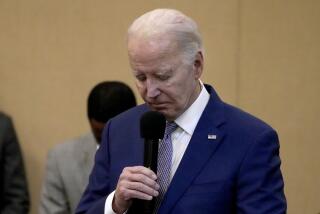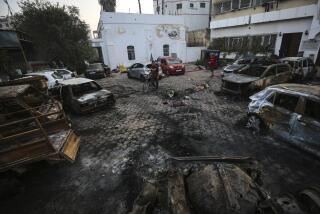CIA defended on its handling of Jordanian bomber
- Share via
Reporting from Washington — The suicide bomber who carried out an attack on a CIA firebase in Afghanistan detonated the device as he was about to be searched and used an explosive so powerful that it killed agency operatives who were as far as 50 feet away, a U.S. intelligence official said Friday.
The details shed new light on how the attacker, a Jordanian physician thought to possess valuable intelligence on Al Qaeda’s inner circle, was able to kill seven CIA employees and contractors and his Jordanian handler and injure six others despite a heavy security presence at the base.
The new information is in contrast with speculation that CIA operatives had skipped a search of the supposed informant or were gathered around him when he carried out the strike last week.
“The idea that he was treated like a movie star surrounded by adoring fans is just garbage,” the U.S. intelligence official said. “The guy was about to be searched when he touched off his bomb.”
CIA security officers were “right next to him,” the official said. “The others who were killed or wounded were roughly 50 feet away.”
The official’s description suggests that the bomber used an explosive powerful enough to inflict damage across a substantial area of the remote base. Details on the size of the bomb or the material from which it was made have not been disclosed; the official described it as “a large explosion with shrapnel.”
The attack was the deadliest in decades for the CIA, killing veteran counter-terrorism operatives at a base that was crucial in gathering intelligence on the location and activities of Al Qaeda leaders across the border in Pakistan.
The attacker was identified this week as Humam Khalil Abu-Mulal Balawi, who was known for screeds on Al Qaeda-affiliated websites.
Balawi, reportedly born in Kuwait, was arrested by Jordanian officials last year as he sought to enter the Gaza Strip as part of a medical relief team.
He was taken to Afghanistan by Jordanian intelligence operatives who thought they had succeeded in “flipping” him, convincing him to switch sides and serve as a spy.
For a year or more, Balawi provided useful information to the Jordanian intelligence service and the CIA.
“The CIA was able to verify independently some of his information, which was passed through another service,” said the official, apparently referring to the Jordanian agency.
Taking advantage of that record, Balawi was able to secure a meeting with CIA operatives at Forward Operating Base Chapman in Khowst with the promise of intelligence on a target who has eluded the agency for years: Al Qaeda’s No. 2, Ayman Zawahiri.
Some of the CIA officials had traveled from the agency’s Kabul headquarters. They represented “a range of specialties,” the U.S. official said.
Balawi had entered the compound but was not far from the vehicle that had brought him when the bomb went off.
Defending the decision to allow the bomber inside, the official said “battlefield tradecraft” calls for moving informants out of danger to conduct a screening behind the gate.
“It might not make much sense to search a prospective clandestine asset right outside an American facility,” the official said, particularly one that was probably known as a facility used by the CIA.
The attack has triggered a review of security procedures at CIA facilities overseas. The use of a double agent demonstrated a startling new level of sophistication by Al Qaeda.
A statement attributed to the terrorist network this week praised the attack and described it as revenge for the CIA’s campaign of Predator drone strikes against militant groups in Pakistan.
More to Read
Sign up for Essential California
The most important California stories and recommendations in your inbox every morning.
You may occasionally receive promotional content from the Los Angeles Times.













